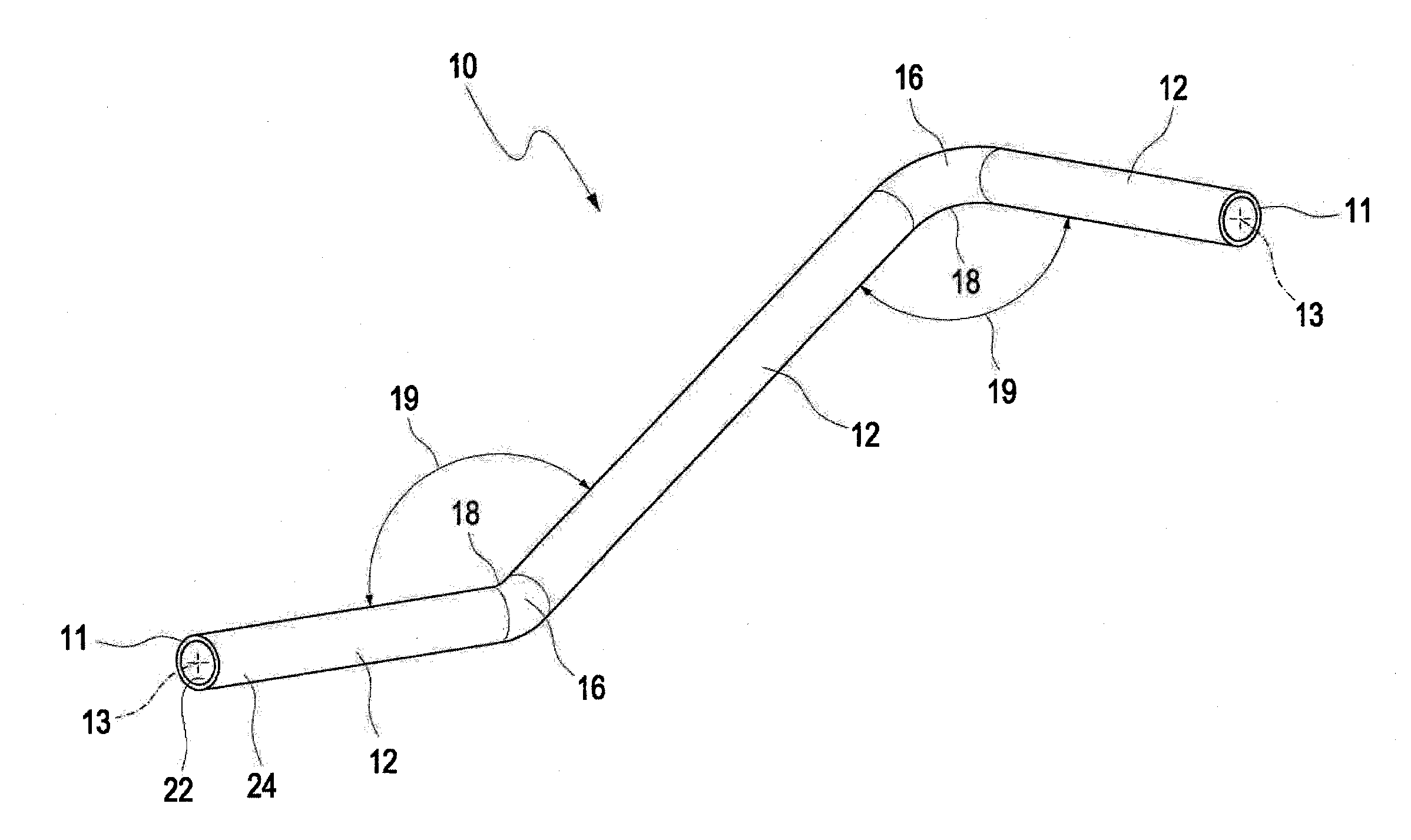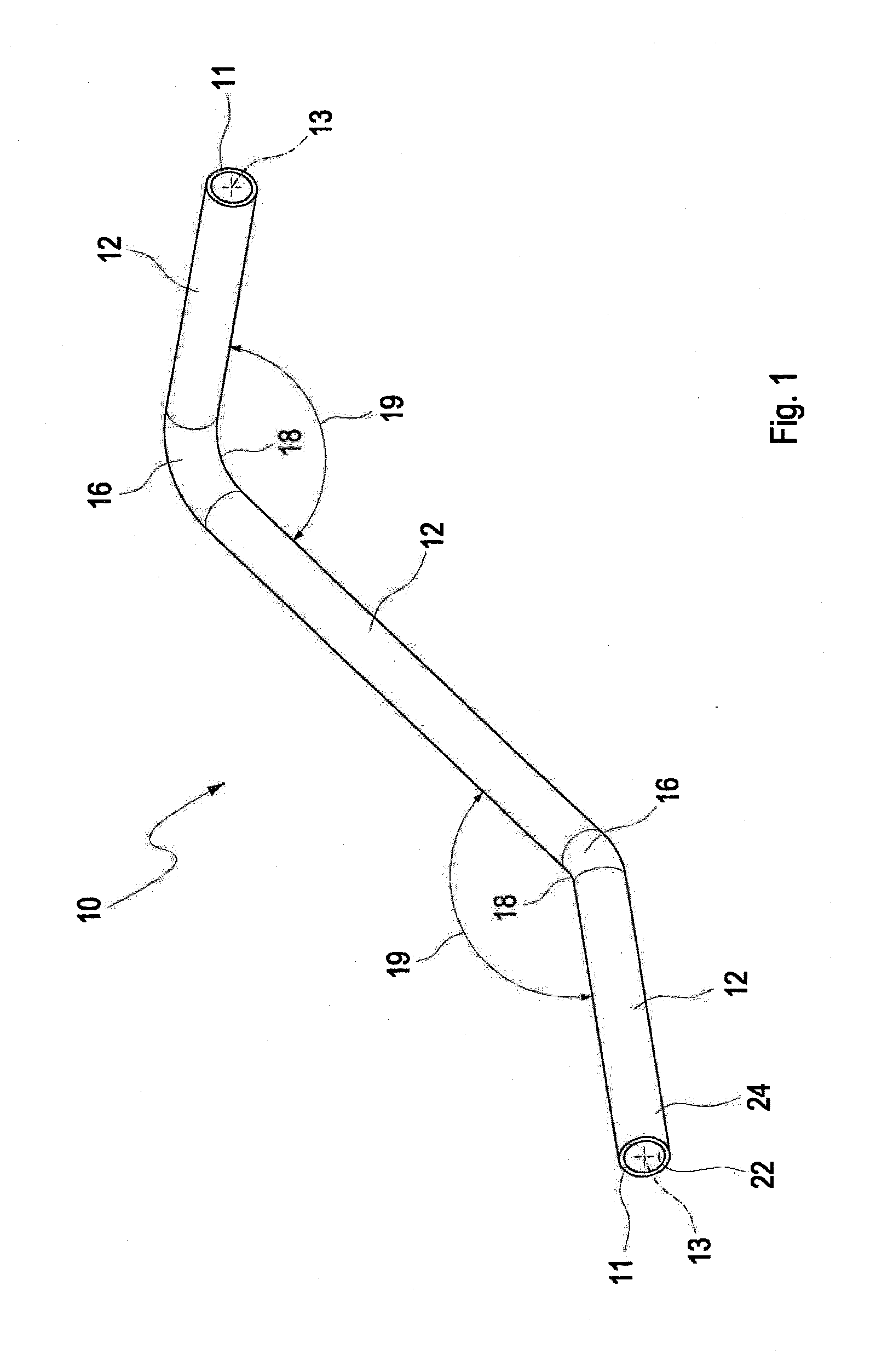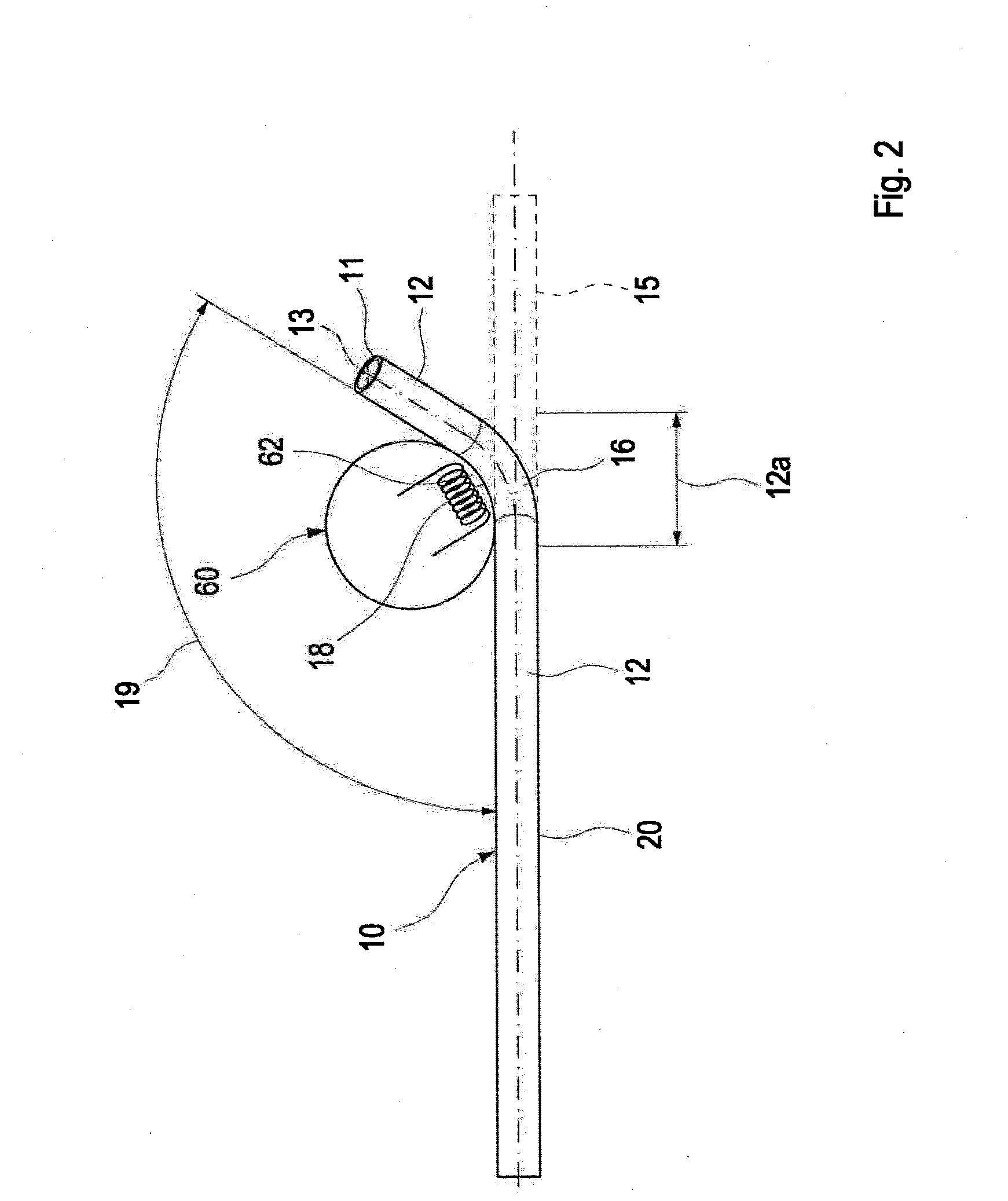Method for bending thermoplastic pipes
a technology of thermoplastic pipes and bent pipes, applied in the direction of electrical/magnetic/electromagnetic heating, other domestic objects, mechanical instruments, etc., can solve the problems of low temperature, achieve low cost, high degree of formability, and precise formability
- Summary
- Abstract
- Description
- Claims
- Application Information
AI Technical Summary
Benefits of technology
Problems solved by technology
Method used
Image
Examples
Embodiment Construction
[0037]FIG. 1 shows a schematic representation of a pipe 10, which has been produced by the method according to the invention. The bent pipe 10 has end cross-sections 11, which each have a central point 13. The end cross-sections 11 have a circular cross-section. The pipe 10 has straight portions 12 and bent portions 16. A bent portion 16 is characterized by a bending radius 18 and a bending angle 19. The pipe 10 also has an inner side 22 and an outer side 24. Furthermore, the longitudinal axes of the straight portions 12 lie in spatially different planes. Furthermore, the straight portions 12 that end in the end cross-sections 13 are designed such that the longitudinal axes of the straight portions 12 are in line with longitudinal axes of further pipes, not depicted, with which the bent pipe 10 is to be connected.
[0038]FIG. 2 schematically shows the method according to the invention for bending a thermoplastic pipe. For this purpose, in a first step, the straight pipe element 15 is ...
PUM
| Property | Measurement | Unit |
|---|---|---|
| temperature | aaaaa | aaaaa |
| bending angle | aaaaa | aaaaa |
| bending angles | aaaaa | aaaaa |
Abstract
Description
Claims
Application Information
 Login to View More
Login to View More - R&D
- Intellectual Property
- Life Sciences
- Materials
- Tech Scout
- Unparalleled Data Quality
- Higher Quality Content
- 60% Fewer Hallucinations
Browse by: Latest US Patents, China's latest patents, Technical Efficacy Thesaurus, Application Domain, Technology Topic, Popular Technical Reports.
© 2025 PatSnap. All rights reserved.Legal|Privacy policy|Modern Slavery Act Transparency Statement|Sitemap|About US| Contact US: help@patsnap.com



